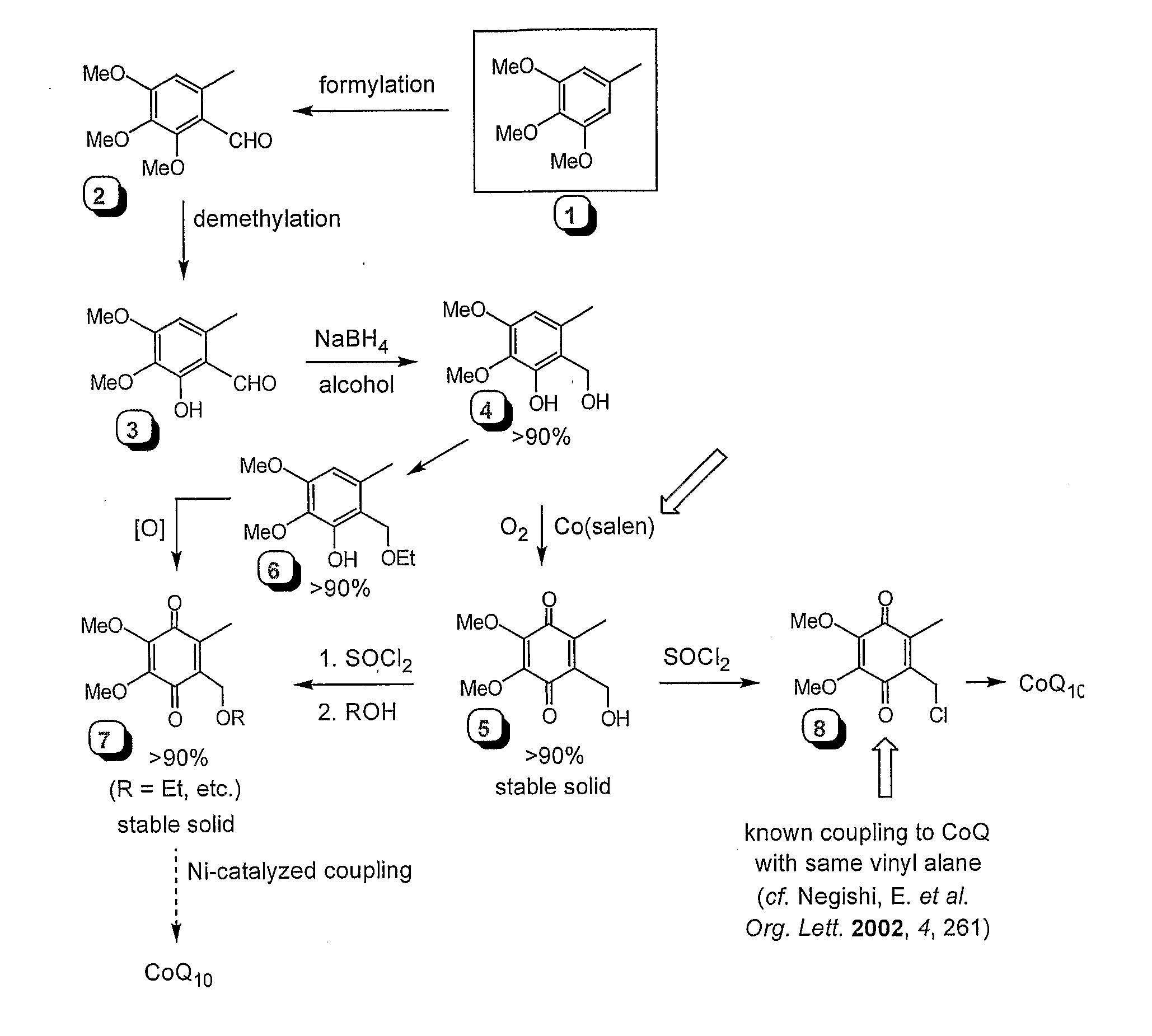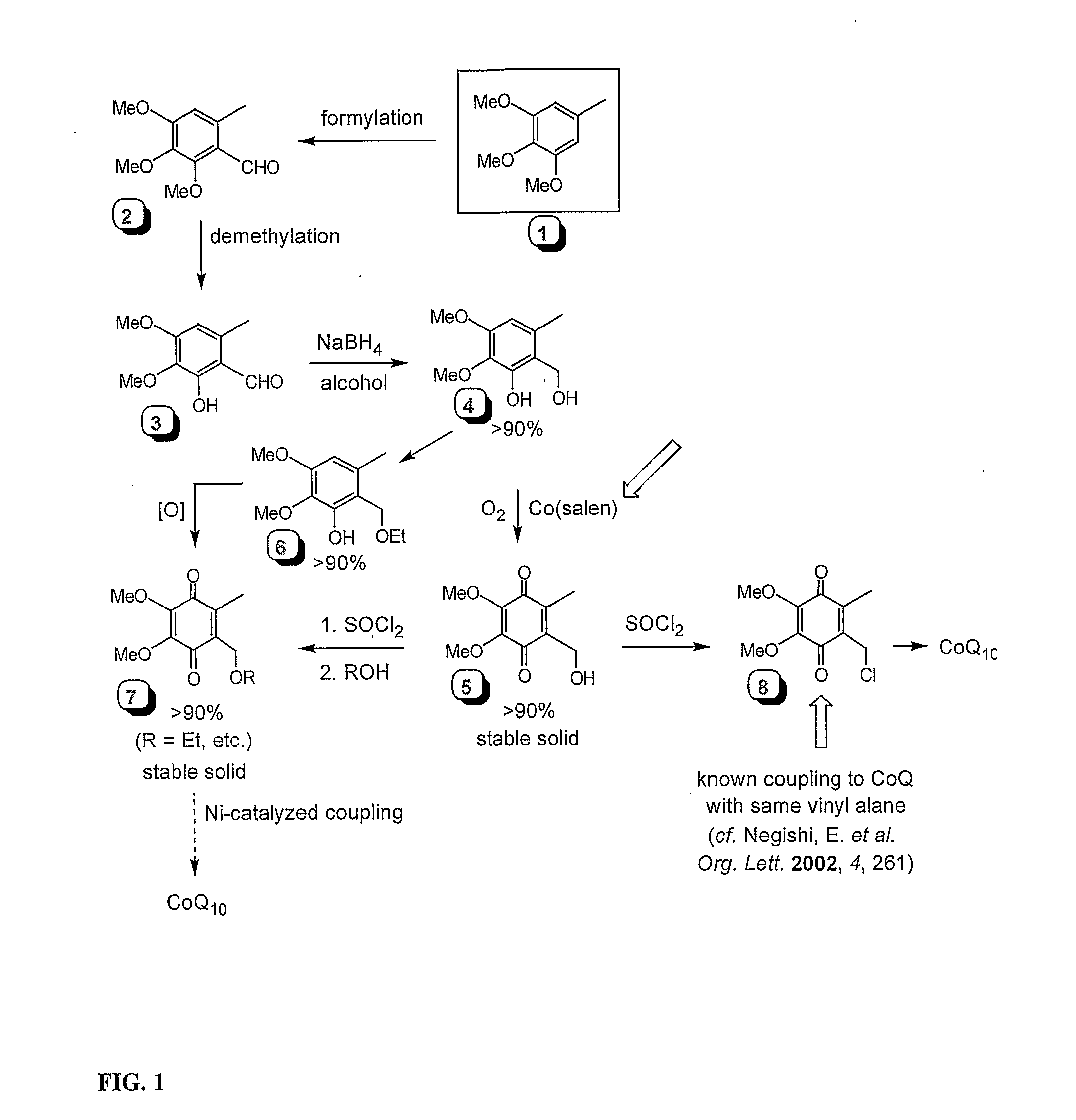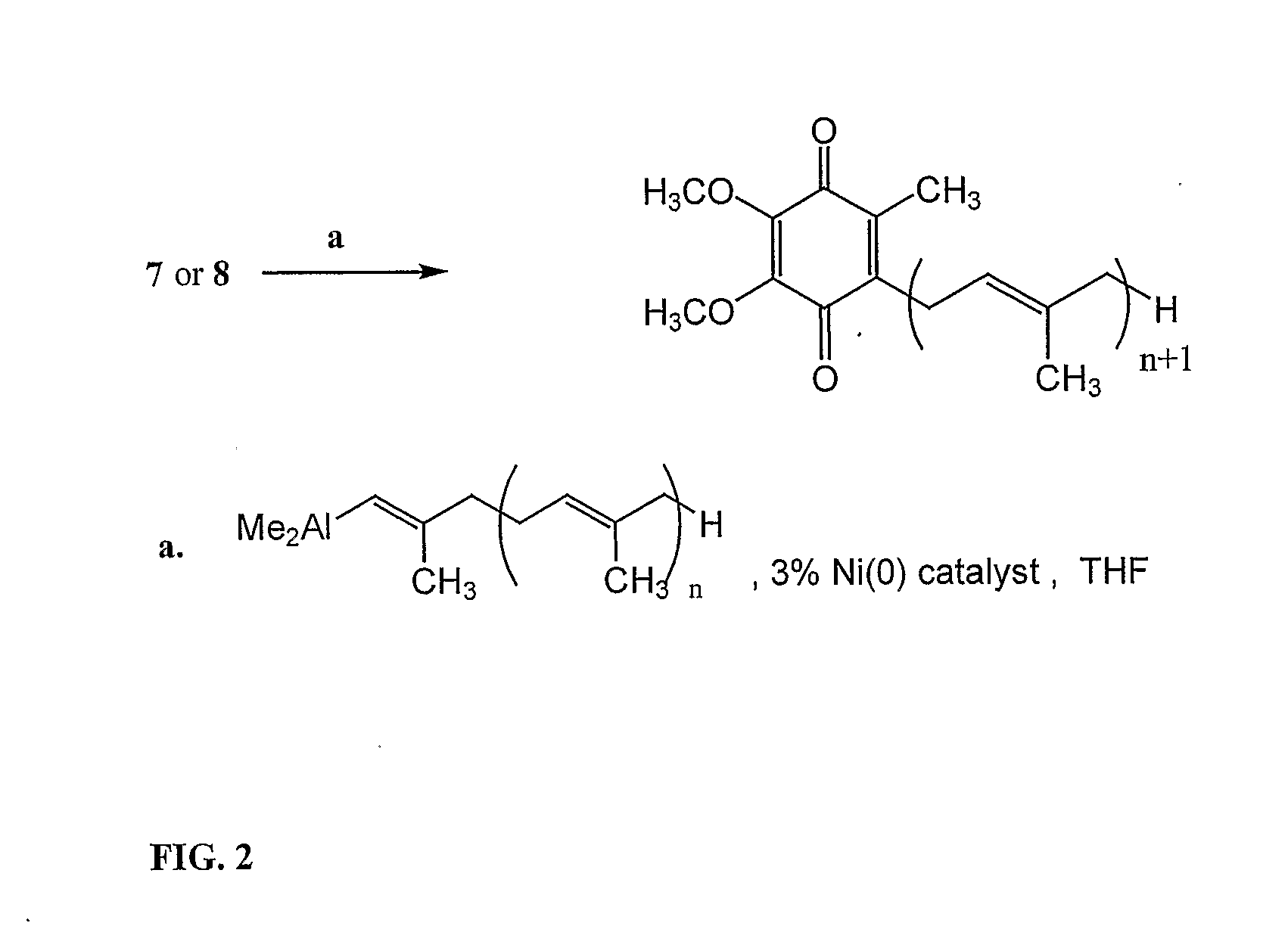Practical, Cost-Effective Synthesis of Ubiquinones
a ubiquinone, cost-effective technology, applied in the direction of organic compound/hydride/coordination complex catalyst, physical/chemical process catalyst, halogenated hydrocarbon preparation, etc., can solve the problems of difficult removal and unsatisfactory side, and achieve convenient, efficient and inexpensive entry, efficient and inexpensive method
- Summary
- Abstract
- Description
- Claims
- Application Information
AI Technical Summary
Benefits of technology
Problems solved by technology
Method used
Image
Examples
example 1
[0135] 1.1 Production of 21. Chlorination of Solanesol
[0136] PCl3 (180 μL, 2.10 mmol) and DMF (110 μL, 2.10 mmol) were added to a 25 mL pear-shaped flask and stirred slowly at RT for 10 min until the solution solidified into a white solid. Solanesol, 20 (2.20 g, 3.50 mmol) was dissolved in 7.0 mL THF and added via cannula to the PCl3 / DMF reagent. The heterogeneous reaction was stirred at RT for 2 h, and then the solvent was completely removed in vacuo to produce a yellow oil. Absolute ethanol (10.0 mL) was added and the flask agitated. The white precipitate was filtered to yield 2.16 g (95.1%) solanesyl chloride, 21.
1.2 Alternative Production of 21: Chlorination of Solanesol
[0137] 40 g (58.4 mmol) water free solanesol, 20 (purity 92% by weight) was dissolved in 158 mL (646 mmol) CCl4 and 30.6 g (0.1168 mmol) triphenylphosphine was added at 20-25° C. The solution was heated to reflux for 6 h. After that additional 3.1 g (0.012 mmol) of triphenylphosphine was added. The solution ...
example 2
[0141] 2.1 Alkylation of Lithiated Propyne
[0142] THF (4.7 mL) at −40° C. was charged with 0.36 mL n-BuLi (2.51 M in hexanes, 0.90 mmol) and after 5 min, 170 μL TMS-propyne (129 mg, 1.16 mmol) were added. After 0.75 h at −40° C., the reaction was cooled to −78° C. Crude 21 (629 mg, 0.97 mmol) dissolved in 5 mL THF was cooled to −78° C. and added slowly via cold cannula. The reaction was stirred at −78° C. for 6 h and quenched by addition of 1 mL saturated NH4Cl solution, and the brownish-yellow mixture concentrated via rotary evaporation to a yellow oil. The residue was partitioned between 10 mL water and 10 mL petroleum ether and the layers separated. The aqueous phase was extracted 3×10 mL petroleum ether and the combined organic extracts washed with 10 mL brine, dried over anhydrous Na2SO4 and concentrated in vacuo. Flash chromatography (0.5% CH2Cl2 / petroleum ether) gave the product, 22, as a clear, colorless oil which solidified upon standing (611 mg; 87%).
2.2 Deprotection of...
example 3
[0150] 3.1 Preparation of the Ni(O) Catalyst 25
[0151] In an oven dried 5 mL round bottomed flask containing a stir bar, cooled and purged with argon, was added 24, NiCl2(PPh3)2 (19.6 mg, 0.03 mmol) and the vessel was purged with argon for 2 min. THF (0.5 mL) was then added and slow stirring commenced. Slow addition of n-BuLi (0.026 mL, 0.058 mmol) gave a blood-red / black heterogeneous solution comprising 25 which was allowed to stir for 2 min prior to using it in the coupling reaction.
PUM
| Property | Measurement | Unit |
|---|---|---|
| temperatures | aaaaa | aaaaa |
| temperature | aaaaa | aaaaa |
| temperature | aaaaa | aaaaa |
Abstract
Description
Claims
Application Information
 Login to View More
Login to View More - R&D
- Intellectual Property
- Life Sciences
- Materials
- Tech Scout
- Unparalleled Data Quality
- Higher Quality Content
- 60% Fewer Hallucinations
Browse by: Latest US Patents, China's latest patents, Technical Efficacy Thesaurus, Application Domain, Technology Topic, Popular Technical Reports.
© 2025 PatSnap. All rights reserved.Legal|Privacy policy|Modern Slavery Act Transparency Statement|Sitemap|About US| Contact US: help@patsnap.com



